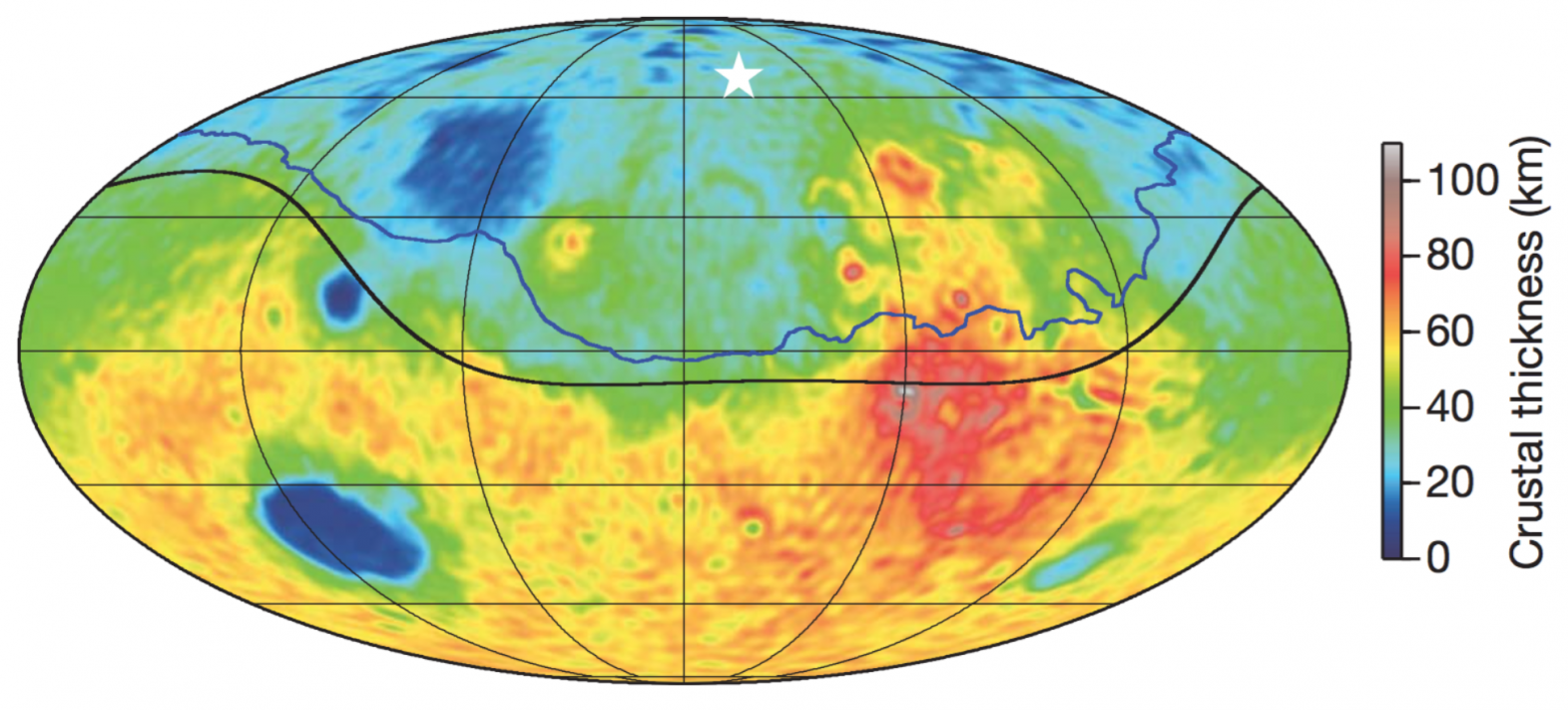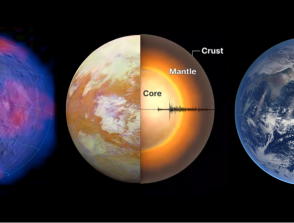Effect of the north/south dichotomy on the thermal structure and evolution of Mars

Start: 05 October 2015
End: 22 October 2018
Supervisors :
Chloé Michaut, Doris Breuer
Related teams :
Planetology and Space Sciences
Status: Defended
Mars’s crustal dichotomy in altitude and aspect between the southern highlands and the northern lowlands is one of the most stricking feature of the planet that probably dates back from the early stages of the planet. This surface crustal dichotomy probably extends in depth implying, in particular, north/south differences in crustal thickness and perhaps in composition. In this thesis, we focus on the consequences of such a potential dichotomy in crustal properties on Mars thermal evolution and structure. The use of 1-D parametrized thermal models is required to explore large ranges of crustal properties. By comparing 1-D and 3-D thermal models in Monte Carlo simulations, we first search for appropriate scaling parameters (arh and βu here) to describe the heat flux through the mantle’s upper layers for a cooling planet in stagnant lid convection. Although those sca- ling parameters are sensitive to the model set-up and, in particular, to the heating mode that evolves with time, we show that one pair of arh and βu can suitably describe the entire thermal evolution of Mars. We also test the effect of varying parameters such as the mantle aspect ra- tio, rheological parameters, surface and internal temperatures, and find that a unique parameter combination arh = 2.16 and βu = 0.345 can be used for all those models. Using these scaling laws in 1-D thermal models, we then search the northern and southern crustal properties that could explain the observations of recent volcanism and the elastic lithos- phere thickness estimates : ∼ 25 km during the Noachian in the south, and a large present-day difference below the two polar caps (> 300 km in the north and > 110 km in the south). We find that 55 − 65 % of the bulk radioelement content are in the crust, and most of it (43 − 51 %) in the southern one. The southern crust could be less dense than the northern one (up to 480 kg/m3) and might contain a non-negligible proportion of felsic rocks. Our models pre- dict present-day north/south surface heat flux of 17.1 − 19.5 mW/m2 and 24.8 − 26.5 mW/m2 , respectively, and a large difference in lithospheric temperatures between the two hemispheres (170 − 304 K in the shallow mantle). In the context of the InSight mission, we finally investigate the effect of our thermal mo- dels on surface wave propagation. We find that surface wave velocities mostly depend on the crustal thickness and, to a lesser extent, on the crustal composition and lithospheric tempe- ratures. Along great circles the dispersion curves are influenced by the properties of the two hemispheres but probably mostly by those of the southern one that covers a wider area. If the northern hemisphere is not enough sampled or if the north/south contrast in crustal thickness is small (∼ 20 km), constraining the northern crust’s properties might be hard with only surface wave analysis.





